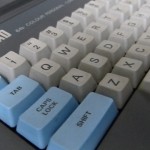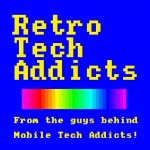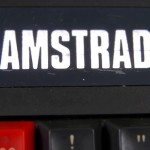 Continuing his retrospective of the Amstrad range Gareth moves onto the second 8-bit computer produced by Amstrad, the CPC 664. This rare machine was produced for a very short period and now attains the status of a collector’s item. Luckily Gareth has one in his collection.
Continuing his retrospective of the Amstrad range Gareth moves onto the second 8-bit computer produced by Amstrad, the CPC 664. This rare machine was produced for a very short period and now attains the status of a collector’s item. Luckily Gareth has one in his collection.
The Amstrad CPC 664 sold well in it’s day however was superseded by the CPC 6128 quite quickly as the 64kb of memory onboard did not deliver what people were looking for. The CPC 6128 became almost as iconic as the CPC 464 and the CPC 664 was ultimately forgotten. Until today!
Compared to the CPC464, the CPC664’s main unit has been significantly redesigned, not only to accommodate the floppy disk drive but also with a redesigned keyboard area. Touted “ergonomic” by Amstrad’s promotional material, the keyboard is noticeably tilted to the front with MSX-style cursor keys above the numeric keypad. Compared to the CPC464’s multicoloured keyboard, the CPC664’s keys are kept in a much quieter grey and pale blue colour scheme.
The back of the CPC664 main unit features the same connectors as the CPC464, with the exception of an additional 12V power lead. Unlike the CPC464’s cassette tape drive that could be powered off the main unit’s 5V voltage, the CPC664’s floppy disk drive requires an additional 12V voltage. This voltage had to be separately supplied by an updated version of the bundled green screen/colour monitor (GT-65 and CTM-644 respectively).
The CPC664 was only produced for approximately six months. In late 1985, when the CPC6128 was introduced in Europe, Amstrad decided not to keep three models in the line-up, and production of the CPC664 was discontinued.
 Gareth and Matt enjoy a warm and fuzzy recollection of days gone by in this the latest instalment of the Retro Tech Addicts podcast.
Gareth and Matt enjoy a warm and fuzzy recollection of days gone by in this the latest instalment of the Retro Tech Addicts podcast.



Connect
Connect with us on the following social media platforms.